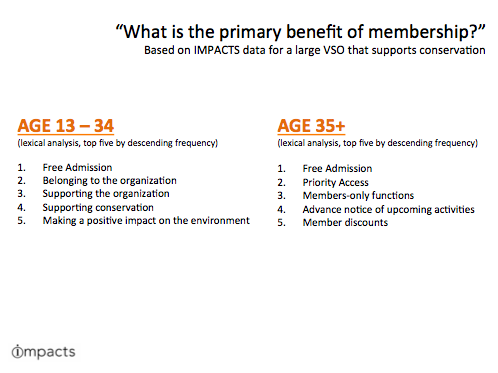Millennials (folks roughly between the ages of 18 and 33) are the largest generational segment of the U.S. population. This generation has different values and mindsets than those of the generations that preceded them – and they are far too large in number for museums and nonprofit organizations to ignore. Organizations that are not marketing to millennials are not only missing an opportunity to reach a new audience, but failing to engage the audience that will increasingly dictate their organization’s operations for the next 40 years (at least).
But it isn’t just marketing departments that have begun incorporating changes to appeal to Millennials. The changes must be incorporated into a larger community relations and nonprofit PR strategy. Because online engagement is increasingly critical for buy-in among all generations, it must be applied not only to marketing, but also to fundraising. Membership teams, in particular, will need to re-work their operations and offerings in order to sustain and grow their number of supporters. In fact, IMPACTS has already uncovered the need for museums to revise how they tell the story of membership benefits.
While conducting research on behalf of a prominent visitor serving organization (VSO) with a conservation-related mission, IMPACTS uncovered an interesting finding. We asked respondents a series of questions related to identifying what they consider to be the primary benefits of membership to the organization. Once compiled, we found that sorting frequency of mention and strength of conviction information uncovered a telling divide between potential members above and below age 35.
Free admission was the pronounced, primary benefit of membership for both age groups. However, benefits two–through–five on the lists do not have any additional commonalities. Moreover, the type of benefits are very different.
Extant data indicate that members of Generation Y are public service motivated and appreciate a feeling of belonging and connectedness with one another and with a cause. This is consistent with the responses gathered from millennials in the data above. Instead of being interested in the more “transactional perks” of membership, this generation desires a feeling of connectedness with a broader social good.
Because members of Generation Y want different things from museum membership than generations before them, museums will need to adapt how they are selling memberships – or at least work to increase connectivity-to-a-cause vibes. Would a person considering membership to your organization feel that they are “making a positive impact” more than simply receiving “advance notice of upcoming activities?” Museums and visitor serving organizations must sell memberships by focusing more on their public services and social responsibilities than the traditional, more transactional benefits that motivated membership in the past.
IMPACTS Experience provides data and expert analysis to many of the world’s leading organizations through its workshops, keynote presentations, webinars, and data services such as pricing studies, market potential analyses, concept testing, and Awareness, Attitude, and Usage studies. Learn more.
We publish new national data and analysis every other Wednesday. Don’t want to miss an update? Subscribe here to get the most recent data and analysis in your inbox.



